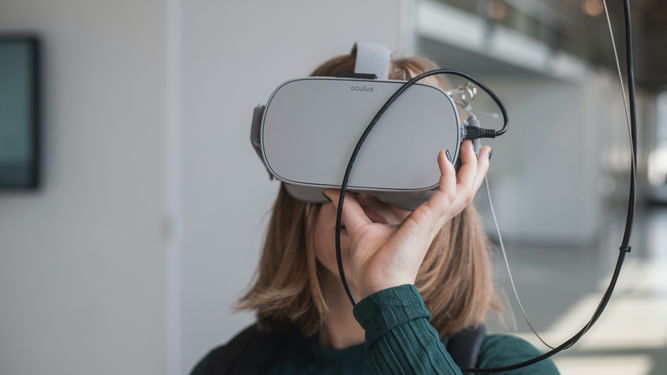Strategy
5 Marketing Mainstays from 2021 (+ What's Coming in 2022)
12/16/21
From how we travel, to how we work, everyone has had to try and find answers and crucially, find a way forward in 2021.
The marketing world has been no exception to this rule as brands prioritized finding ways to continue pursuing sustainable growth - even with constantly changing circumstances.
To reflect upon 2021, we have created a snapshot of the most important areas marketers tackled from the past year. How many of these were part of your strategy in 2021? And which ones will be top of the list for 2022?
Let’s dive in.
1. Privacy changes triggered marketing shakeups
As users demanded more ways to secure their digital privacy, major tech players like Apple responded with new privacy features, such as the launches of iOS 14.5 and 15. And with Apple making up approximately 35% of the global email market, marketers were left scrambling to find new ways to track key metrics and, in some cases, change entire automation strategies.
2. WFH impacted campaign strategy
Remote work, once seen as a perk, has become a normal part of many people’s lives with as many as 74% of professionals expecting it to become standard. For marketers, this means that the timing of campaigns - and where those campaigns go live- has changed. Audiences are using social media more than ever and their schedules (and commutes) are no longer as predictable as they once were.
3. Combining ‘being human’ with personalization worked
Challenging times have led to audiences craving authenticity and a personal touch from marketers. Major brands like L’Oreal have found success by tailoring their offers to local markets and focusing on being relatable with their campaigns. And if your brand is hesitant to request information from your audience, remember that 83% of shoppers said they would exchange data for a more personalized experience.
4. Digital transformation sped up - again
Technology has always moved fast but, with more than 80% of business executives accelerating plans to digitize work processes and deploy new technologies, the pace of digital transformation has hit a new pace. To meet audience demands, brands are leaning on martech to help scale in areas such as personalization. As these brands go from launching new digital initiatives to optimizing them, expect the importance of data and analytics technology to only grow.
5. Rethinking customer journeys was essential
For years, brands have embraced funnel thinking as a way to push audiences towards their own marketing or sales goals. But today, success is found in the customer journeys that are built around the needs of the customer, not the goals of the brand. As Gene Cornfield wrote,
“Company outcomes depend on the number of customers who successfully achieve their intended purpose”
Missing the mark on this is costly, at least 32% of customers stop doing business with brands they love after one bad brand experience, so refining these journeys was a top priority.
What's Coming In 2022
Now that we’ve covered 2021, let’s look straight ahead at where our marketing eyes should be focused on for 2022. Disclaimer: This isn’t the section for buzzwords. While there are dozens of areas you could focus on, this list looks at what could be most impactful and at the top of your list.
1. Digital acceleration will create a taste for change
There was a time when figuring out a digital strategy was a part of the overall plan. Today, that digital strategy is the plan. With audiences spending the majority of their time online, marketers will need to find ways to adapt their approaches and create digital experiences that drive engagement and build trust. Monika Sinha highlighted the importance of digital development when she said;
The new "normal” is disruption. Organizations that lean into this reality and leverage their innovation capacity, technology and reach will not only survive, but grow as a result.
Brands can start improving their own digital capabilities by adjusting their budgets, investing more in customer-facing technology, and starting to connect all data sources to get the full customer journey picture.
2. Marketing sustainability becomes a priority
Brands highly value success in metrics like ‘revenue generated’ and ‘high conversion rates’ - but audiences don’t.
People are searching for brands that have missions they align with, which is why many will be focusing on establishing a social mission that resonates. Since nearly 1 in 3 consumers claimed to have stopped purchasing certain brands or products because they had ethical or sustainability-related concerns about them, brands stand to gain a lot by making sustainable marketing a part of their 2022 agenda.
3. Privacy creates a path to brand loyalty
New expectations have been set by customers when it comes to how brands handle their data. With research saying that 87% of consumers will take their business elsewhere if they don’t trust a company is handling their data responsibly, brands need to embrace transparency. By explaining why you’re requesting data and being clear about what you plan to do with it, you can boost the brand experience of your audience - as well as overall trust.
4. Experiential marketing gives audiences a digital break
With many people spending more time in front of their screens than ever before, marketing in the real world is making a comeback with audiences excited to engage away from their phones and computers. To support this, a recent poll showed that 58% of people prefer in-person events compared to 17% that prefer staying online. Marketing initiatives such as pop-up experiences, OOH advertising, and old-fashioned events will give brands a chance to connect in a way that audiences are desperate for.
Trends On The Horizon
Next year promises to be one full of innovations as customers continue to expect brands to find ways to deliver unique experiences. But, if you’re looking to venture into less charted territories, there are some exciting options to explore. Cue the buzzwords.
1. NFTs and the rise of digital collecting
Before this year, non-fungible tokens (NFTs) were a concept that most marketers probably didn’t even know existed. But as technology accelerates, NFTs have begun to make their mark with brands like Coca-Cola and Adidas all issuing their own digital assets. And as people get more comfortable with the concept of NFTs (a recent Adweek/Harris poll survey said only 40% of respondents are familiar with them) expect more brands to release their own digital collectibles in 2022. Fair warning though, it’s easy to make mistakes in the world of NFTs as one seller found out when they accidentally listed their ‘Bored Ape’ NFT for $297,000 less than it was worth. As with all new technologies, make sure you do your homework and accept that there will be a learning curve.
2. Media streaming provides new advertising opportunities
Video consumption is booming with video streaming revenue forecasted to grow 64% from 2020 to 2025, reaching $94 billion by 2025 according to PwC. Due to the combination of affordability and accessibility, audiences gravitated heavily towards media streaming services like Netflix, YouTube, Twitch, and many more. Heading into 2022, brands will be looking to leverage the precision targeting, engagement, and flexibility offered by connected TV.
It’s all to play for in 2022. New trends will certainly arise, as they always do, but the real wins will come to those brands that identify what strategies make the most sense for them and their audiences without getting sucked into fads your audience isn’t paying attention to. If your brand needs support figuring out marketing priorities for the coming year - or help turning them into reality - Nordic Morning is here to help. Contact us here to connect with our team.



